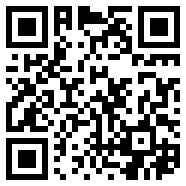Subscribers Get More Out of QRStuff!
QR Code
Design
100%
Ad Free
QR Code
Analytics
Unlimited
QR Codes
QR Codes - What they are & how to use them
What is a QR code?
A QR Code (it stands for "Quick Response") is a mobile phone readable barcode that's been big in Japan forever, broke into Europe and China a while back, and in recent years has become popular in the US. In its simplest sense think "print based hypertext link" - simply encode a URL into the QR Code and then point a mobile phone or tablet at it. If the device has a QR Code decoding app installed on it, it will fire up its browser and go straight to that URL.
But it doesn't stop there - a QR Code can also contain a phone number, an SMS or email message, V-Card contact details or just plain alphanumeric text, and the scanning device will respond by opening up the correct application on the phone to handle the encoded data appropriately courtesy of the FNC1 Application Identifiers that are embedded in the encoded data.
The technical specifications for a QR Code are set down in the ISO-18004 standard so they are the same all over the world, and the only significant variations from one QR code to another (apart from the data it contains) is the number of modules required to store the data. A Version 1 QR Code is a 21x21 array of data elements with the array increasing in size by 4 modules for each increase in version number. The largest standard QR Code is a Version 40 symbol that 177x177 modules in size and can hold up 4296 characters of alphanumeric data (theoretically) compared to 25 characters for a Version 1 QR Code.
While there is still a bit of scope for improvement, the resolution of average present-day camera-enabled smart phones is such that the size of the data modules (dots) on a QR Code of Version 10 or above (57x57) presents a real risk of incorrect decoding of the symbol by the device. When creating a QR Code intended for use with mobile phones it's best to stick to Version 7 (45x45 data modules) or lower, and a QR Code symbol of at least 2cm (0.85inches) across. See our blog posts What Size Should A Printed QR Code Be? and QR Code Minimum Size for information on QR code sizing.
To make things a bit more robust, the QR Code also contains its own error correction data, internal orientation calibration and self-alignment markers. In this way it doesn't matter whether the QR code is upside down or wrapped around a curved surface, the message will still get through.
The anatomy of a QR code
- Positional alignment indicators within scanning application
- Timing pattern to determine module co-ords within symbol
- Error correction control information
- Encoded data
- ”Quiet Zone” buffer to isolate symbol from surroundings
How to create a QR code?
- Step 1 - Select the type of QR code you need.
We have 27 QR code data types to choose from including website URL, video, Facebook, map location, SMS or email message, contact details, etc. - Step 2 - Add the QR code content.
Depending on the data type you've chosen, enter the content for the QR code eg; the website URL, the Facebook page, the map location, the email message details, etc. - Step 3 - Dynamic or Static QR code?
You can choose whether to make your QR code dynamic or static. Dynamic QR codes are editable and has analytics available. - Step 4 - Style your QR code.
Change the colour of your QR code using our handy colour picker. If you are a paid subscriber, you can change the appearance of your QR code or add a logo. - Step 5 - Download your QR code.
Download your completed QR code image. A range of vector and raster file formats are available for paid subscribers.
And don't forget to test your QR code!
How to use a QR code?
The uses of QR codes are as wide and varied as your imagination and are regularly used in sales, marketing, advertising, education, business and technical communication, asset management, and event management, with QR codes being added to brochures, signage, documents, packaging, and products.
There's not enough room or time here to go into all the details, but we do have a few examples here, and we've also selected some videos that will get you started with understanding what QR codes can do and how they can be used.




 English (UK)
English (UK) Spanish (ES)
Spanish (ES) French (FR)
French (FR)